Neuqu├®n Province
| Neuqu├®n | |||
| Province | |||
|
|||
| Divisions | 16 departments | ||
|---|---|---|---|
| Capital | Neuqu├®n | ||
| Area | 94,078 km┬▓ (36,324 sq mi) | ||
| Population | 474,155 (2001) | ||
| Density | 5.0 / km┬▓ (13 / sq mi) | ||
| Governor | Jorge Sapag | ||
| - Senators | Nanci Parilli, Marcelo Fuentes, Horacio Lores | ||
| ISO 3166-2 code | AR-Q | ||
| Demonym | Neuquino | ||
.svg.png) |
|||
| Website: http://www.neuquen.gov.ar | |||
Neuqu├®n (Spanish pronunciation: [neu╦êken]) is a province of Argentina, located in the west of the country, at the northern end of Patagonia. It borders Mendoza Province to the north, Rio Negro Province to the southeast, and Chile to the west. It also meets La Pampa Province at its northeast corner.
Contents |
History
The Neuqu├®n Province receives its name from the Neuqu├®n River. The term "Neuqu├®n" derives from the Mapudungun word "Nehuenken" meaning drafty, which the aborigines used to refer to this river. The word, without accentuation, is a palindrome.
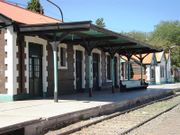
Inhabited by Pehuenches, the territory was not explored by the Conquistadores until late in the 17th century. In 1670 another priest, Nicolás Mascardi, founded the Jesuit mission Nuestra Senora de Nahuel Huapi. But the most important explorer was Perito Francisco Moreno that made several trips to Patagonia and made accurate descriptions of the area in his book "Viaje al Pais de las Manzanas" reaching in 1875 at Nahuel Huapi lake.
In 1879 Julio Argentino Roca started the Conquest of the Desert (Conquista del Desierto) that finally broke the aboriginal resistance. In 1884 the Patagonia's political division was restructured and the Territory of Neuqu├®n acquired its current boundaries. The capital of the province moved several times to Norqu├¡n (1884-85), Campana Mahuida (current Loncopu├®) (1885-1888), Chos Malal (1885-1901), and finally Confluencia currently known as Neuqu├®n.
At the beginning of the 20th century the railway reached the city of Neuqu├®n, and a new irrigating system was finished facilitating the production and later transportation of crops. Petroleum was found in Plaza Huincul in 1918, giving to Neuqu├®n a new push forward.
Local politics have long been dominated by a single political party, the MPN or Movimiento Popular Neuquino founded by Elias Sapag, a prosperous businessman born in Lebanon.
Migrating to Argentina, the Sapag family arrived in Neuqu├®n Territory around 1910 with the railroad, eventually making their home in Zapala, whose dry, fertile mountain valleys and orchards were reminiscent of their native Lebanon. Neuqu├®n is rich in natural resources such as natural gas, petroleum, virgin forests and water resources suitable for electric power and tourism, alike. These resources were formerly managed by central National Government, which at the time resulted in little local benefit. Because of social unrest, Elias Sapag and two younger brothers, Felipe and Amado, started the MPN, an active political activity rooted in federalism and greater local rights over the territory and its resources.
The territory was made a province on June 15, 1955, and its constitution was promulgated on November 28, 1957. Felipe Sapag soon became politically prominent. Elected governor in 1962 on the Movimiento Popular Neuquino, a coup against progressive President Arturo Frondizi that March prevented Sapag from taking office. Eventually becoming governor in 1963-66 and 1973-76, he presided over one of Argentina's fastest-growing provinces. The national government established the University of Neuqu├®n in 1964, later incorporated into the new National University of Comahue in 1971. Removed as governor following the violent, March 1976 coup against Isabel Per├│n, Felipe Sapag was returned to office as governor in 1983-87 and 1995-99. His emphasis on public works and political independence from Buenos Aires helped him and the MPN win every province-wide election, since. His brother Elias Sapag became senator in 1963-66, 1973-76 and from 1983 until his death in 1993, becoming the longest-serving senator in national history. The MPN also elected Governors Pedro Salvatori (1987-91), Jorge Sobisch (1991-95 and 1999-2007) and current Governor Jorge Sapag (2007-11).
Neuqu├®n has, since 1955, become a prosperous province with a high impact on the national energy supply and as a growing tourist destination, outperforming most other provinces in the Patagonia region and in Argentina.
Geography and climate
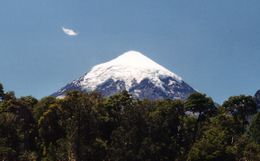
The province's limits are set by the Colorado River to the Northeast, separating it from the Mendoza Province, the Limay River to the Southeast facing the Río Negro Province, and the Andes mountain range to the west, separating it from Chile.
There are two main distinctive landscapes; the mountainous fertile valleys with forest on the West, and the arid plateau with fertile land only near the basins of the rivers on the East, mainly the Limay River and Neuqu├®n River.
The lacustrine system includes other less important rivers such as Alumin├® River, Malleo, and Pic├║n Leuf├║ River, and a series of lakes including the Nahuel Huapi Lake (550 km┬▓), shared with the R├¡o Negro Province, the Alumin├® Lake (58 km┬▓), L├ícar Lake (49 km┬▓), Huechulaufquen Lake (110 km┬▓), Lolog (35 km┬▓), Traful, Hermoso, Quill├®n, ├æorquinco, Tromen and Falkner.
The weather is continental and cold, with temperate summers, and in the arid regions a wide difference in temperature between day and night. There is also a big contrast in humidity, with regular precipitations of up to 4.000 mm in some regions of the Andean part of the province.
The province is home of the magnificent Arrayanes (Luma apiculata) forest at the Los Arrayanes National Park. Other National parks include Lanín National Park and the Lanín extinct volcano, the Nahuel Huapí National Park shared with the Río Negro Province, and the Laguna Blanca National Park.
Economy

Neuquen is one of Argentina's most prosperous provinces, its estimated US$7 billion economy in 2006 (the country's eighth largest, despite its small population) generated a per capita income of US$14,700, Argentina's fourth highest and two-thirds above the national average.[1]
No province in Argentina, however, is as dependent on any one sector as is Neuquen's. Roughly half its output is accounted for by its mining and extractive sector, mainly on account of its massive gas and petroleum production, the most important in Argentina.
The province generates a significant part of Patagonia's electric power through the hydroelectric plants of Piedra del Águila, El Chocón, Pichi Picún Leufú, Planicie Banderita (in the Cerros Colorados Complex), and Alicurá. The town of Arroyito hosts the only heavy water plant in the country.
Another important activity is the production of apples, pears, peaches and others, specially in the Alto Valle area, shared with Río Negro.
The piquetero movement (organizations of unemployed workers) was born in Neuqu├®n in the 1990s, during the presidency of Carlos Menem.
Tourism
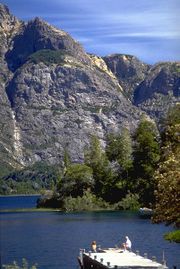
- See also Tourism in Argentina article
A destination of many Argentines and foreigners, the province has a nuber of year-round attractions, including San Martín de los Andes, Villa La Angostura, Camino de los Siete Lagos, Los Arrayanes National Park, Lanín National Park, Nahuel Huapí National Park, Laguna Blanca National Park, and the Copahue hot baths.
During the winter, there are the ski resorts in Chapelco, Cerro Bayo and Caviahue.
Many hike or fish, mainly for river trout, the lake district region of Southwestern Neuqu├®n that stretches into R├¡o Negro and Chubut Provinces.
There were a number of dinosaurs in the area, of which the bones of a 95 million years old Argentinosaurus are in dispay at the Carmen Funes Museum in Plaza Huincul.
Political division
The province is divided in 16 departments (Spanish: departamentos).
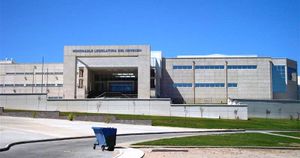

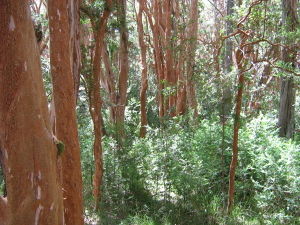
| Map | Departament | Capital |
| Alumin├® | Alumin├® | |
| A├▒elo | A├▒elo | |
| Catán Lil | Las Coloradas | |
| Chos Malal | Chos Malal | |
| Coll├│n Cura | Piedra del Aguila | |
| Confluencia | Neuqu├®n | |
| Huiliches | Junín de los Andes | |
| Lácar | San Martín de los Andes | |
| Loncopu├® | Loncopu├® | |
| Los Lagos | Villa La Angostura | |
| Minas | Andacollo | |
| Ñorquín | El Huecú | |
| Pehuenches | Rinc├│n de los Sauces | |
| Pic├║n Leuf├║ | Pic├║n Leuf├║ | |
| Picunches | Las Lajas | |
| Zapala | Zapala |
References
External links
|
||||||||||

.svg.png)